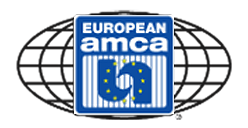Energy Efficiency Directive
The Energy Efficiency Directive was adopted in 2012 establishing common measures amongst EU member states to reduce energy consumption across Europe. In 2018, the Directive Directive 2018/844 EU on Energy Efficiency amended the previous directive and emphasized its long-term ambition to achieve a decarbonized Union. The EU will have to attain at least 32,5% energy efficiency target by 2030. This target is not binding at national level, but might be increased in 2023 after evaluation and revision from the European Commission.
Some of the elements that the revised directive cover include:
- The extension of annual energy saving obligation after 2020 (the target is to achieve additional savings of 0,8% each year of final energy consumption)
- Stronger rules on metering and billing of thermal energy that tend to result in awareness amongst consumers on their self-consumption
- EU countries must have transparent, publicly available national rules on the allocation of the cost of heating, cooling and hot water services in multi-apartment and multi-purpose buildings where these services are shared
- Increases the level of ambition for the heating and cooling sectors
- General review of the Energy Efficiency Directive in 2023
To help guide the member states officials on how to implement the directive, The European Commission issued a guidance document in 2013.
Return to European AMCA Update page
Air Movement and Control Association International, Inc.


